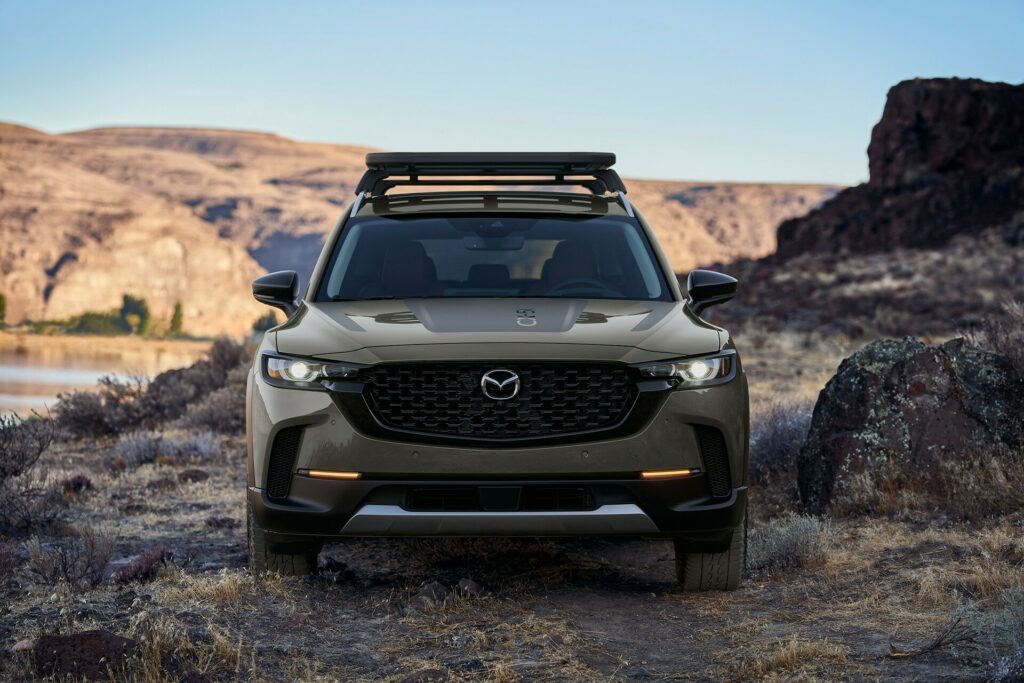Mazda Iconic SP Marching Towards Production “Step By Step”, Says CEO
- Mazda CEO Masahiro Moro confirmed that the Iconic SP concept is moving towards production.
- The production version may retain the concept’s dual-rotor range-extender hybrid powertrain.
- The new coupe could be a spiritual successor to the RX-7, with innovative technology.
After years of speculation, fans of Mazda’s rotary-powered sports coupes can finally breathe a sigh of relief. If you weren’t convinced by the words of Mazda’s head designer, Masashi Nakayama, the company’s CEO, Masahiro Moro, has stepped in to reaffirm the brand’s commitment to producing a vehicle based on the well-received Iconic SP concept.
More: Mazda On Track For Record US Sales As It Confirms New ICE, Hybrid, And EV Tech
During a wide-ranging interview with Auto News, Moro was asked about a production version of the Iconic SP. He responded, “We still persist in making it happen, and we are marching towards it step by step”. While not exactly a hard launch date, his words are the closest thing we’ll get to a green light for the production version of the Iconic SP. After years of speculation, it looks like Mazda fans might finally get their hands on a legitimate successor to the RX-7 that we all miss.
Mazda’s Vision for the Future
Moro had shown his enthusiasm for the concept right from the start. During the Iconic SP reveal at the 2023 Japan Mobility Show, the CEO described it as a beacon of Mazda’s “commitment to the future”.
As mentioned earlier, this isn’t the first time we’ve heard about the company’s intent to bring the concept to production from a high-ranking official. Last month, design chief Masashi Nakayama stated, “This concept is not just one of those empty show cars. It has been designed with real intent to turn it into a production model in the not-so-distant future.”

During the same interview, the Mazda CEO revealed that the company is developing a new hybrid powertrain with two rotors, one that could cater to America’s thirst for power: “The rotors spin separately in different chambers with one shaft. We need to generate more electricity. Two rotors will generate more power, which is more suitable to U.S. market characteristics”.
The Iconic SP’s hybrid powertrain is an interesting departure from what many expected. Instead of a traditional combustion (rotary) engine, Mazda opted for a dual-rotor engine that serves as a power generator for an electric drivetrain. This hybrid setup produces a combined 365 hp (272 kW/370 PS), which is more than we ever got from the RX-7 and RX-8 models.
A Hybrid with Purpose
The hybrid rotary engine powering the Iconic SP isn’t just a clever throwback. It also addresses one of the most significant challenges in the EV industry today—weight. By using a range-extender internal combustion engine (ICE) to generate electricity, Mazda can use a smaller battery pack, reducing weight and avoiding the cumbersome, energy-hungry batteries found in most BEVs.
Earlier this year, Mazda told Carscoops that a rotary-powered project would reach the market as soon as some “technical hurdles” were overcome.
The Road Ahead
We recently asked Mazda USA about a production version of the concept and received the following reply: “Iconic SP is a design study for future Mazda sports cars. Whether it’s an MX-5 Miata, or any other Mazda vehicle, the people who work at Mazda have a lot of passion for driving and encouraging others to also find that passion through the fun to drive cars that we make and will continue to make.”











